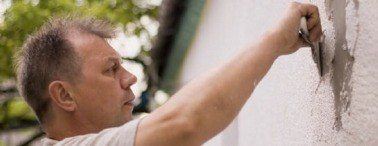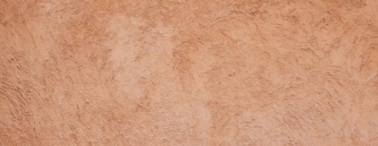
The Evolution of Stucco and Plaster
Stucco or plaster finishes have been around for centuries. Traditionally, interior walls utilized wood lath and plaster whereas traditional stucco construction has been used primarily for exterior walls.
Beginning in the late 1800s, the defining difference between plaster and stucco was the intended use. Both were basically the same material composition of lime, sand, and water.
Exterior stucco has evolved from the earlier version into a variety of stucco finish options. Ranging from cement stucco with Portland cement replacing the lime content, to acrylic stucco finishes. A popular type is spray stucco, favored because of the simplified application process. In addition, an increasing trend in stucco design is to utilize decorative interior stucco wall elements that give an old world atmosphere.
At the same time, traditional interior wall plaster has been replaced by gypsum plaster, a type of dry wall compound. Plaster and gypsum board (also known as dry wall or sheetrock) is widely used for interior wall finishes. This contemporary type of plaster is used both for finishing dry wall seams, and creating decorative finish textures.
How to Apply Stucco
Traditional stucco application is achieved using a process that involves three coats; the scratch coat, the brown coat, and the finish coat. With advanced improvements in materials and technique, however, many of today's stucco contractor professionals use only two coats, the scratch and finish coats.
Since finished stucco results in considerable weight, special attention must be given to the framing that will support it, in order to avoid cracking or collapse.
The process is relatively simple for applying stucco on brick or other masonry such as cement block or concrete. Masonry walls are strong and durable; no other support system or wire mesh is required. A concrete bonding agent is applied to the wall surface and allowed to dry; the stucco is then applied directly to the wall.
Stucco is most commonly applied to wood wall surfaces; an important consideration is the framing. If the structure (and stucco) will be two stories or more, normal movement in the sill plates is likely to cause the stucco to crack or bulge. Therefore, it is best to eliminate sill plates between stories by using balloon framing in the construction of the building. This type framing reduces joints and movement; creating a more stable sub-structure for the stucco.
The framing should be sheathed with plywood and a layer of 15 lb. asphalt felt paper or building wrap as a moisture barrier. Wire mesh called metal lath (not to be confused with wood lath used for traditional interior plaster) is secured to the sheathing with nails or screws with 1/8-inch to 1/4-inch furring spacers, so that there will be a small space between the metal lath and the sheathing. Use only galvanized nails or screws to avoid rusting. The mesh should have at least 1-inch openings, but no larger than 2-inches.
The stucco mortar is made either from scratch or from a commercial mixture, prepared according to product instructions. To mix stucco from scratch, use three parts sand, one part Portland cement, and hydrated lime to 10% by volume.
Stucco is applied in the first or scratch coat using a trowel; make sure that it is forced through the mesh. Properly applied, the metal lath ends up totally embedded in the stucco in what is called a “keyâ€. Complete the coat on one wall before moving on to another. Allow the stucco to slightly harden, and then use a plaster's rake to scratch it with a cross-hatch pattern to a depth of about 1/8-inch.
Allow the scratch coat to cure 36 to 48 hours; keep the wall moist at all times. The slower stucco dries, the harder and more durable it will be. Proceed with the optional brown coat, applied and floated smooth. Or skip this coat and apply the finish coat. The finish coat can be either a “color coat†utilizing colored sand, or an acrylic based finish. The finish coat can be floated with water for a sandy finish, or a trowel can be used to achieve a variety of textures.
Whether three coats or two, the final stucco wall finish should be about 1-inch thick. Continue to keep the entire wall damp to slow curing process for hardness; especially in hot, dry weather.
For stucco repair, use a hammer to loosen the stucco around the edges of the damaged area being repaired to expose the wire mesh. Insert a new piece of felt; nail it into place with galvanized roofing nails. Insert a new piece of wire mesh; twist the edges into the old mesh. Nail or screw it into place with special stucco nails or type of screws previously mentioned. Apply new stucco in coats as outlined above.
Locate a Stucco Contractor
Do it yourself stucco is a project for homeowners with a moderate level of skill; homeowners with little or no skills should seek the services of a stucco contractor.
At TrustedPros.ca homeowners can locate reliable local stucco service providers at the snap of the finger; as easy as 1, 2, and 3.
- Whether seeking Toronto stucco repair services or a plaster contractor for plaster wall repair, homeowners sign up absolutely free, with no obligation. And then post project information online, where it is immediately visible to local contractors 24/7.
- Sit back, and let the professionals come to you! Local contractors view project specifications online; they also receive e-mail notification of new project listings. They can provide competitive bids in just days or even hours from project posting.
- Homeowners can view profile pages, references, customer comments and feedback, licensing/insurance/certification credentials, and photos of recently completed projects. And then make an informed decision to hire a local stucco professional, or no one at all. Remember, there is no obligation whatsoever.





